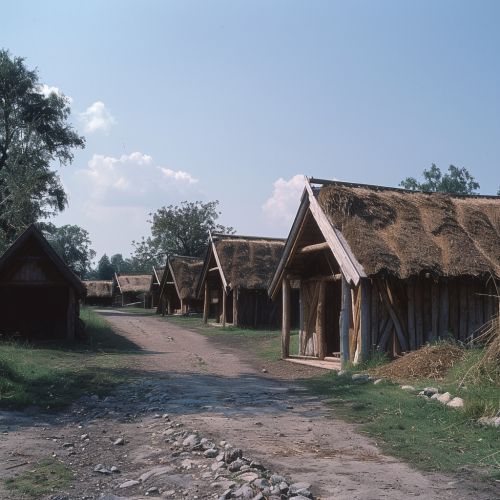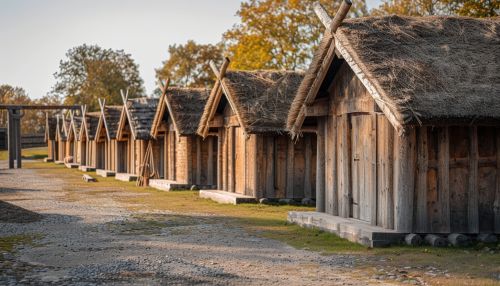Birka
Introduction
Birka was a significant Viking Age trading center located on the island of Björkö in Lake Mälaren, Sweden. It is one of the earliest urban settlements in Scandinavia and played a crucial role in the development of trade and cultural exchange in the region. Birka, along with Hedeby, is often considered one of the first towns in Sweden and is a UNESCO World Heritage Site.
Historical Background
Birka was established around the mid-8th century and thrived until the late 10th century. The town was strategically located to facilitate trade between the Norse territories and other regions, including the Byzantine Empire, the Abbasid Caliphate, and the Carolingian Empire. The town's location on Björkö island provided natural protection and easy access to the Baltic Sea and inland waterways.
Archaeological Discoveries
Extensive archaeological excavations have been conducted at Birka since the 19th century, revealing a wealth of information about the town's layout, economy, and daily life. These excavations have uncovered remains of houses, workshops, and fortifications, as well as a large number of artifacts, including coins, jewelry, weapons, and tools.


Urban Layout and Architecture
Birka was organized into distinct areas, including residential quarters, craft workshops, and trading spaces. The town was fortified with a defensive wall and a hillfort, known as Borg, which provided additional protection against potential invaders.
Residential Areas
The residential areas of Birka consisted of wooden houses with thatched roofs. These houses were typically rectangular in shape and built using a post-and-plank construction method. The interiors were divided into living spaces, storage areas, and workshops.
Craft Workshops
Craft production was a vital aspect of Birka's economy. Archaeological evidence indicates that various crafts were practiced in the town, including blacksmithing, woodworking, and textile production. Workshops were often located near residential areas, allowing artisans to live and work in close proximity.
Economy and Trade
Birka's economy was heavily reliant on trade, both within Scandinavia and with distant regions. The town served as a hub for the exchange of goods such as furs, textiles, metals, and exotic items like silk and spices.
Trade Networks
Birka was part of an extensive trade network that connected the Viking world with the broader medieval economy. This network included routes along the Volga River, the Dnieper River, and the Silk Road. These routes facilitated the movement of goods and cultural exchange between different regions.
Coinage and Currency
The use of coinage in Birka reflects its role as a major trading center. Coins from various regions, including the Islamic world, Byzantium, and Western Europe, have been found at the site. These coins were used not only as currency but also as raw material for crafting jewelry and other items.
Social and Cultural Life
Birka was a cosmopolitan town with a diverse population that included traders, artisans, and warriors from different cultural backgrounds. This diversity is reflected in the material culture and burial practices observed at the site.
Burial Practices
The burial practices in Birka provide valuable insights into the social structure and beliefs of its inhabitants. Both cremation and inhumation burials have been found, often accompanied by grave goods such as weapons, jewelry, and everyday items. The presence of richly furnished graves suggests the existence of a wealthy elite class.
Religious Practices
Birka was a center for both pagan and early Christian religious practices. The town is known for its early Christian mission led by the monk Ansgar, who established a church in Birka in the 9th century. This mission marked one of the first attempts to introduce Christianity to the Scandinavian region.
Decline and Legacy
Birka's decline began in the late 10th century, possibly due to changes in trade routes, political shifts, and the rise of other trading centers such as Sigtuna. By the end of the 10th century, Birka was largely abandoned, and its role as a major trading hub diminished.
Despite its decline, Birka's legacy endures through its contributions to the understanding of Viking Age trade, urbanization, and cultural exchange. The site continues to be a focal point for archaeological research and historical studies.
